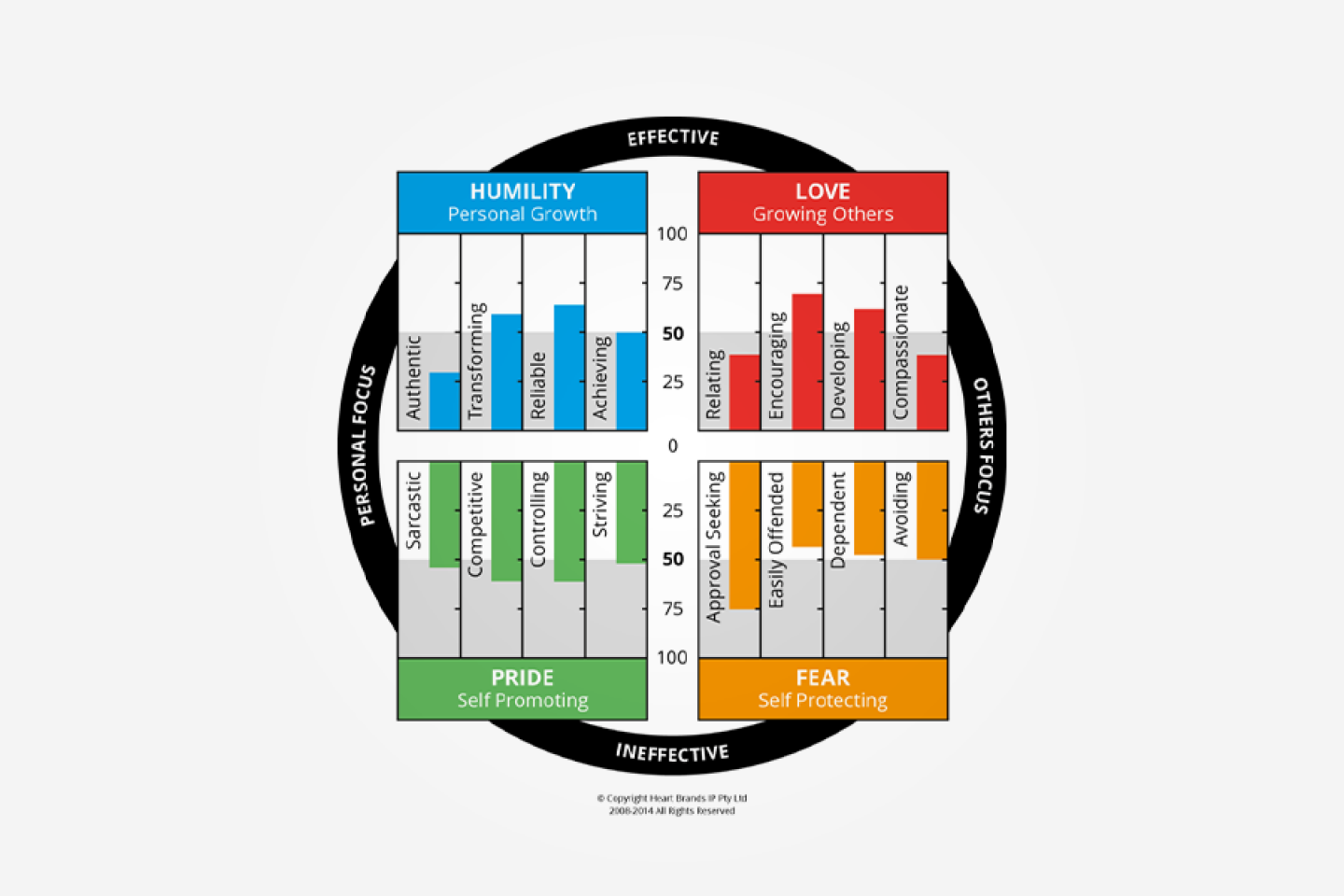
What does it mean to be 'above the line'?
At Heartstyles, we spend a lot of time thinking about 'the line'. Our founders, Stephen and Mara Klemich, have dedicated their careers to helping others get above it. It's a boundary our practitioners always have on their radar. It even features in the title their transformative book, Above the Line: Living and Leading with Heart.
But what exactly is this line? And what does it mean to be above it?
The two-sentence answer
'The line' is the boundary between effective behaviours and ineffective ones. When we're 'above the line', we're much more likely to be having a positive impact on our surroundings.
That's the super-simple answer. And, as simple answers tend to, it raises a few questions of its own. So, let's go a little deeper...
A phrase, a prop and a place
For those already using Heartstyles to guide their character development journey, 'above the line' (which abbreviates as ATL) is a highly resonant term. It describes a place where their behaviours and deepest values align, moving them closer to becoming their best self.
Which is all very well. But what if you're new to all this?
Well, let's really break it down. First and foremost 'above the line' is a string of words. That sounds glib, but it's actually very important to recognise. Because language doesn't just describe our reality - it very often shapes it. Here's an illustrative example...
Studies have shown that Russian speakers are much more able to distinguish between shades of blue than English speakers. This ability hinges not on superior eyesight, but the fact that there is no equivalent to the word 'blue' in Russian. Instead, different words are used to describe different hues. As a result, those familiar with these terms ('goluboy' for lighter blues and 'siniy' for darker') actually see the colours differently than those who categorise them as members of the same family.
This very clearly demonstrates a pertinent point: it's far easier to draw distinctions between things when you have the language to do so. Knowing that, at Heartstyles we use 'the line' as a piece of language that helps us recognise the border between effective and ineffective behaviours. In a sense, the phrase is a prop that helps us get to the place.
Drawing the line (quite literally)
The Heartstyles Indicator (the tool we use to measure people's behavioural styles) is the graphic representation of this line - and of what lies either side of it. Love, Humility and their various manifestations are above the line (ATL), while Pride and Fear are below it (BTL).

When we work with individuals, teams and organisations, we use the Indicator as a way of showing where their behaviours currently sit. But the line is much more than a division between quadrants on a graphic. Through the coaching received on our programmes, participants are able to internalise the line - to recognise for themselves whether they are BTL or ATL in any given scenario. This takes conscious effort, enforced by feedback. (And given that those things require discussion, having the terminology to talk it all through comes in handy.)
Why do you need a line?
If you take a closer look at the Indicator above, you'll see the eight specific styles that sit on either side of the line. At first glance, it would be fair to look at these behaviours and ask exactly why it's so important to keep a dividing line in mind. After all, it's separating 'Sarcasm' from 'Authentic', and 'Reliable' from 'Controlling'. Aren't those worlds apart anyway?
Well, in terms of their impact on our effectiveness and overall wellbeing, yes, they are worlds apart. The ATLs tend to push us forward and deepen our connections to the world around us, while the BTLs do the opposite. But when it comes to knowing when we are behaving ATL or BTL, without a clear idea of where the line is, it can be surprisingly hard to tell.
Let's take a look at another example: 'Approval Seeking' vs 'Relating'. These two styles sit on either side of the line. One is driven by fear of rejection, the other by a desire to build meaningful relationships. They sound like very different things, but in truth we all know they can look pretty similar. We can probably all recall a time where we seemed to be relating to someone but, in all honesty, were simply seeking their approval.
Though it's not always as obvious, all of the behaviours that sit across the line from each other have a similar relationship. They're two sides of the same coin, two points on the same spectrum. As with 'goluboy' and 'siniy', one could easily fade into the other. For Russians, language splits those shades up and makes the definition between them clearer. Likewise, Heartstyles gives individuals the tools to perceive whether actions are born from instinctual self-preservation or genuine purpose.
Of course, it's not just about swapping one particular BTL style for an ATL 'equivalent'. When we go ATL, we're less likely to use any of the BTL styles...
For example, 'Authentic' sits across from 'Sarcastic' on the Indicator - and it's easy to see how being truly authentic would reduce our use of sarcasm. But it wouldn't end there. If we're being upfront with others, we're less afraid of putting our views forward. That reduces our fear of healthy confrontation (which is typical of the 'Avoiding' style) and of judgement (which is 'Approval Seeking'). And when we're honest with others, it's easier to appreciate the honesty offered to us - even when it's challenging. That means being less 'Easily Offended'.
The examples go on and on, but the main point here is that it all starts with knowing where the line is.
Final thought: It's a line, not a wall
It's important to remember that Heartstyles is not a profiling tool. We don't tell people who or what they are. Instead we shed light on what they're doing, the impact it has and how they could do things differently.
If the results from an Indicator show that someone's behaviours are below the line, that doesn't mean they are defined by fear or lacking in love - far from it. In our experience, people scoring highly in BTL styles have just as much love and are just as well intentioned as those scoring highly ATL. It's just that our behaviours aren't informed by our intentions alone. All of our past experiences (and the coping mechanisms we may have formed in response to them) are also at play.
But that's another blog for another day...
For now we'll end by simply saying that while there are plenty of BTL behaviours out there, there's no such thing as a BTL person. And even then, going BTL is only ineffective,not bad. Seeking approval and being sarcastic might not get you where you want to be in life, but it certainly doesn't make you a bad person.

